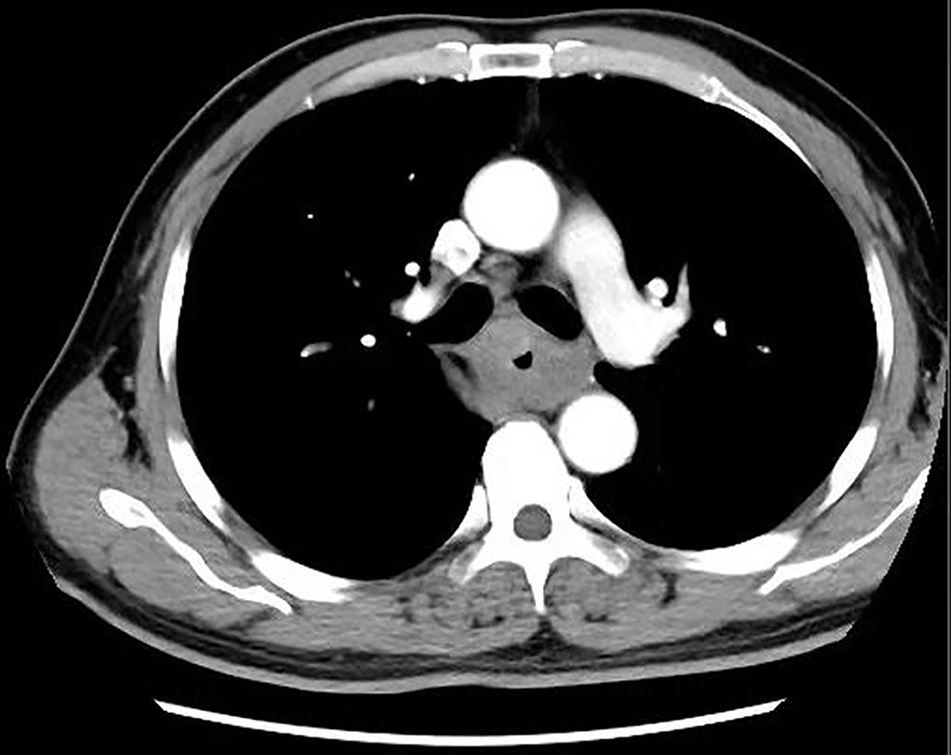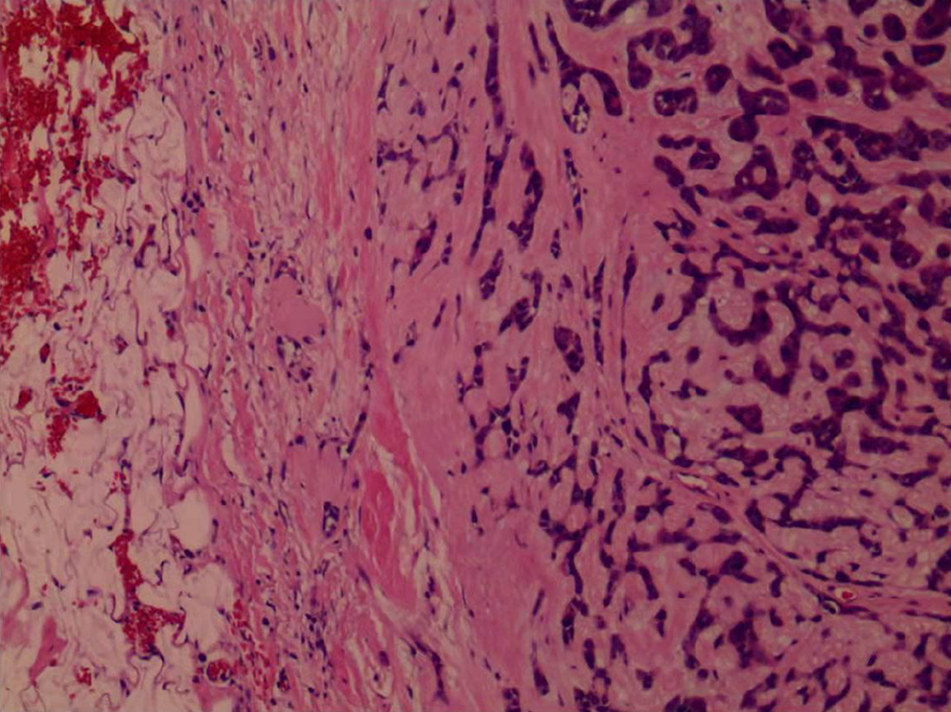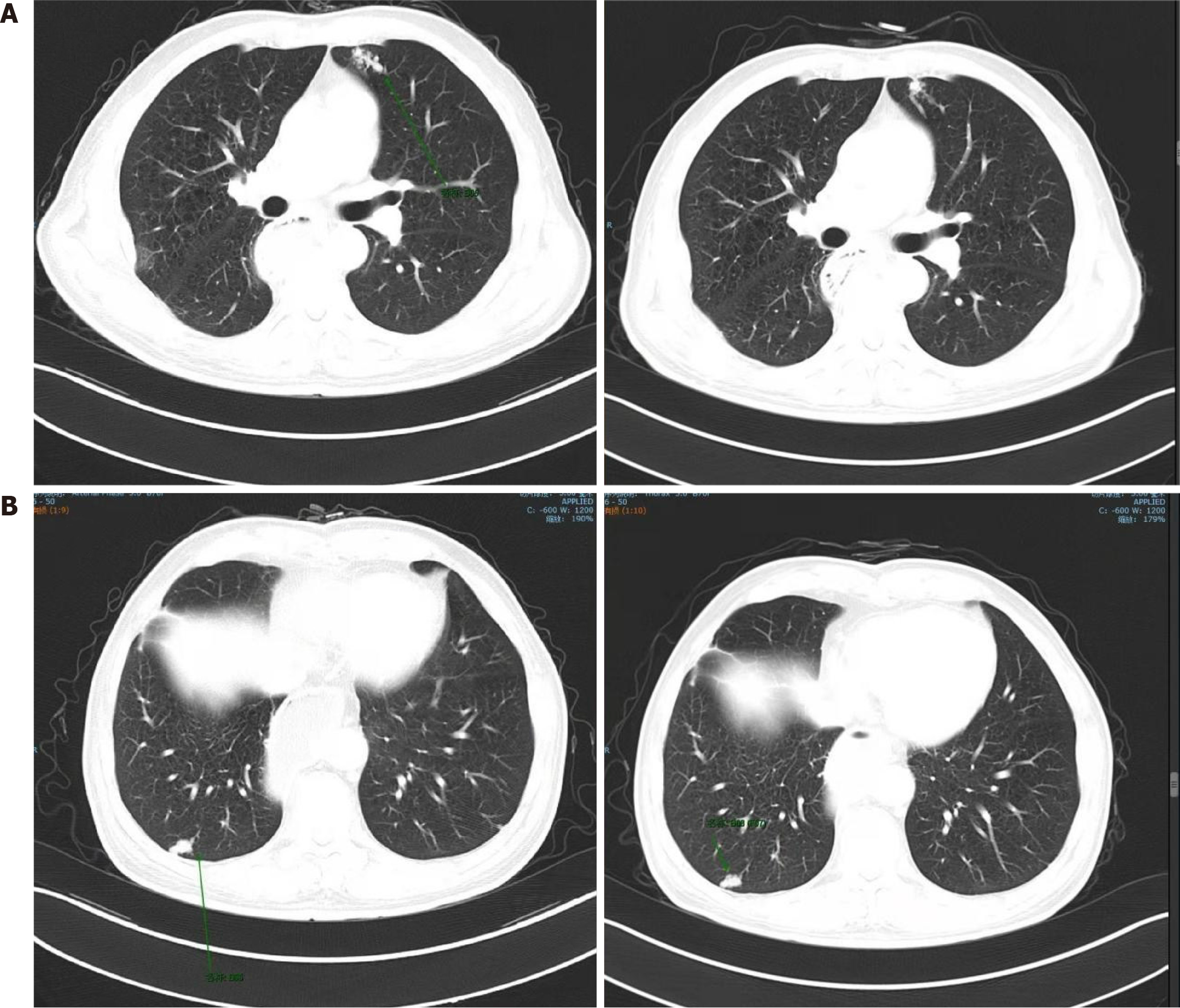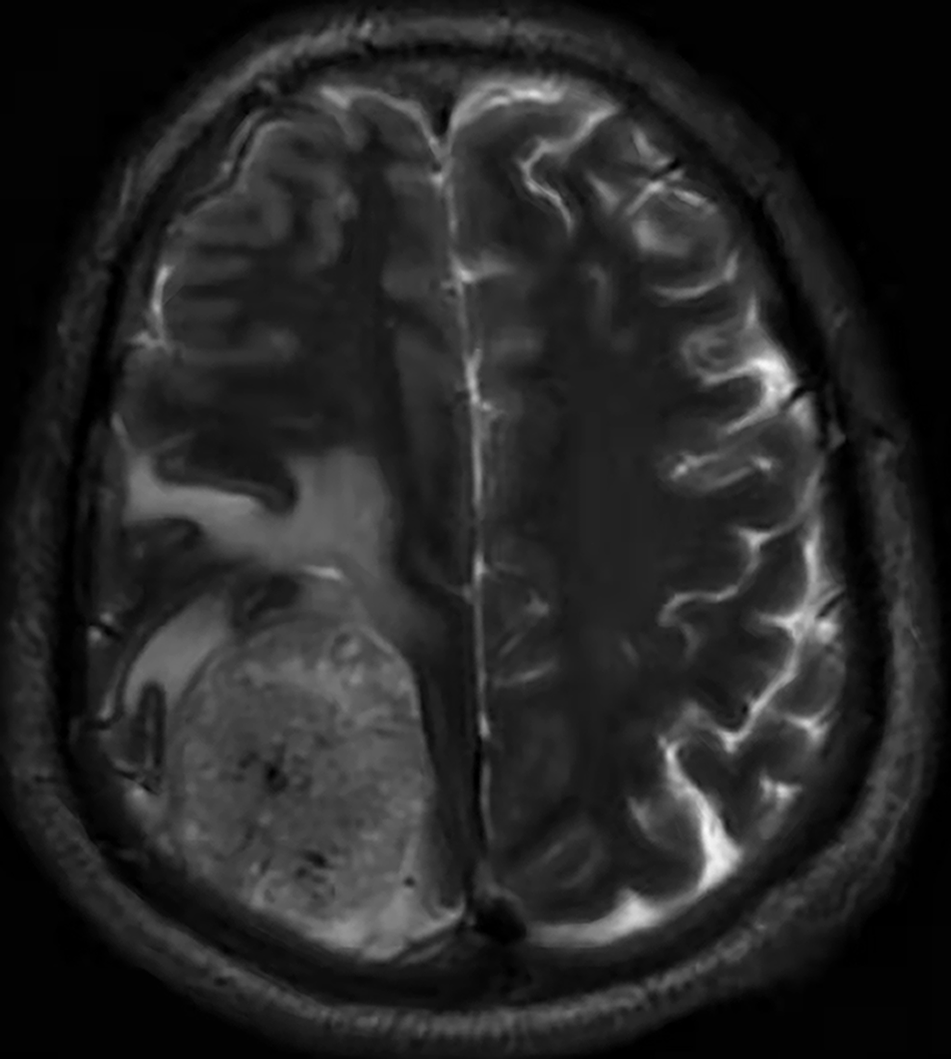Copyright
©The Author(s) 2024.
World J Clin Cases. Jul 6, 2024; 12(19): 3925-3930
Published online Jul 6, 2024. doi: 10.12998/wjcc.v12.i19.3925
Published online Jul 6, 2024. doi: 10.12998/wjcc.v12.i19.3925
Figure 1 Computed tomography scan of the chest and abdomen on April 11, 2017.
The wall of the middle and upper part of the esophagus is thickened, the lumen is narrowed, and enhancement of the soft tissue components is observed. Multiple small solid nodules in both lungs are detected and considered to be intrapulmonary lymph nodes.
Figure 2 Radical resection specimen for esophageal cancer.
Figure 3 Computed tomography scan of chest and abdomen.
A: Computed tomography (CT) scan of chest and abdomen on September 17, 2019. Soft tissue shadows can be seen next to the spine in the lower lobe of the left lung, along with multiple soft tissue shadows in the lower lobes of both lungs, the largest one being about 1.8 cm in diameter; B: CT scan of the chest and abdomen on December 16, 2019. Multiple patchy and mass soft tissue density shadows are observed in both lungs. The largest one is approximately 3.2 cm × 2.4 cm.
Figure 4 Cranial magnetic resonance imaging on February 16, 2022.
Multiple round mixed signal shadows are detected in the right frontal lobe, temporal lobe, bilateral parieto-occipital lobe, and cerebellar hemisphere. The largest, with a size of approximately 4.6 cm × 4.6 cm × 5.4 cm is located in the right parietal lobe.
- Citation: Xu L, Xu R, Sun J. Anal metastasis in esophageal cancer: A case report. World J Clin Cases 2024; 12(19): 3925-3930
- URL: https://www.wjgnet.com/2307-8960/full/v12/i19/3925.htm
- DOI: https://dx.doi.org/10.12998/wjcc.v12.i19.3925
















